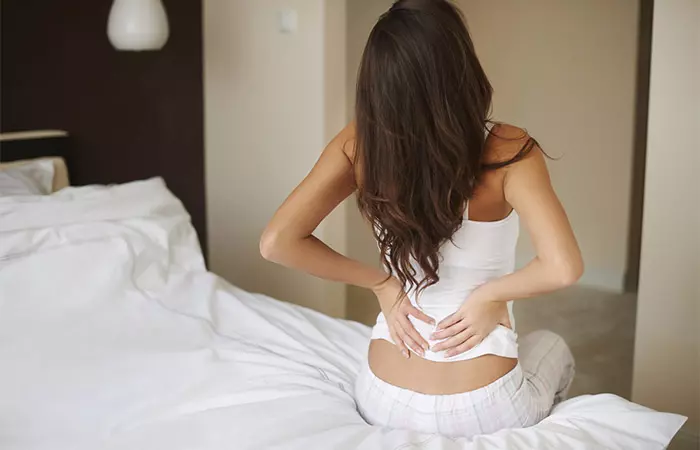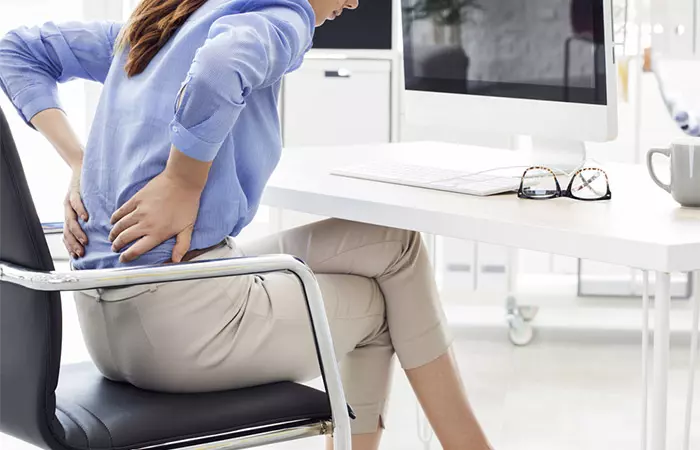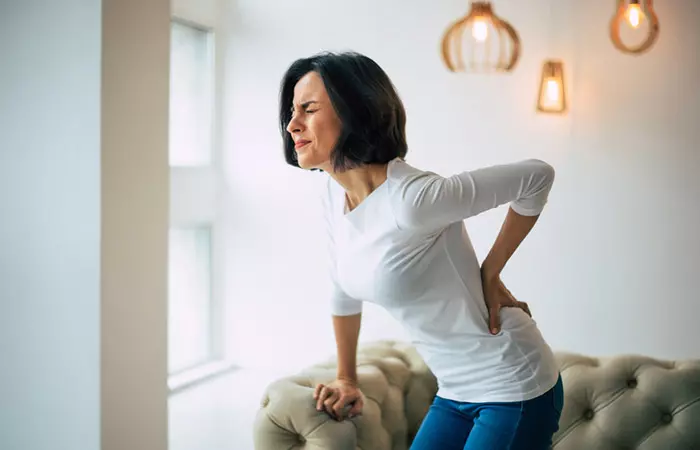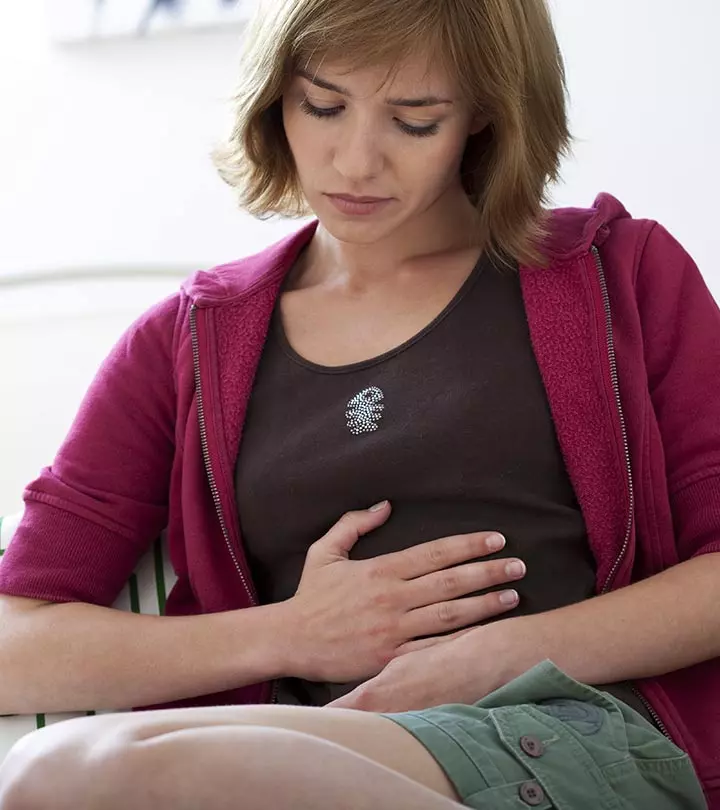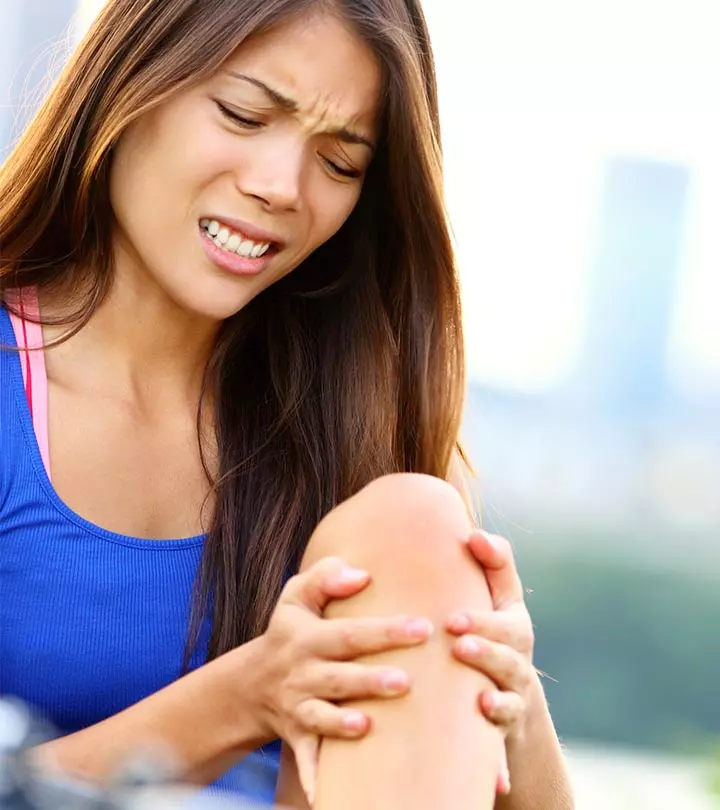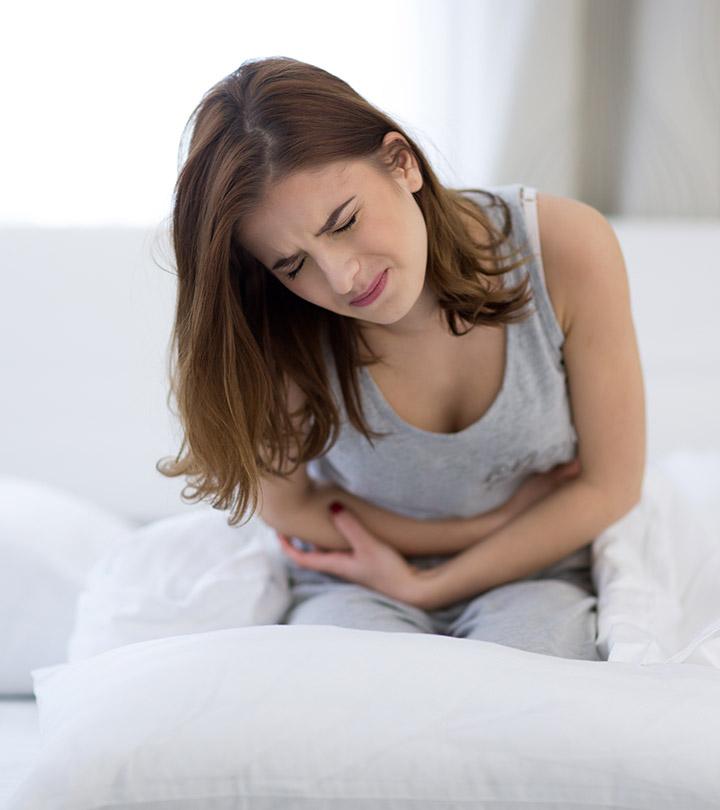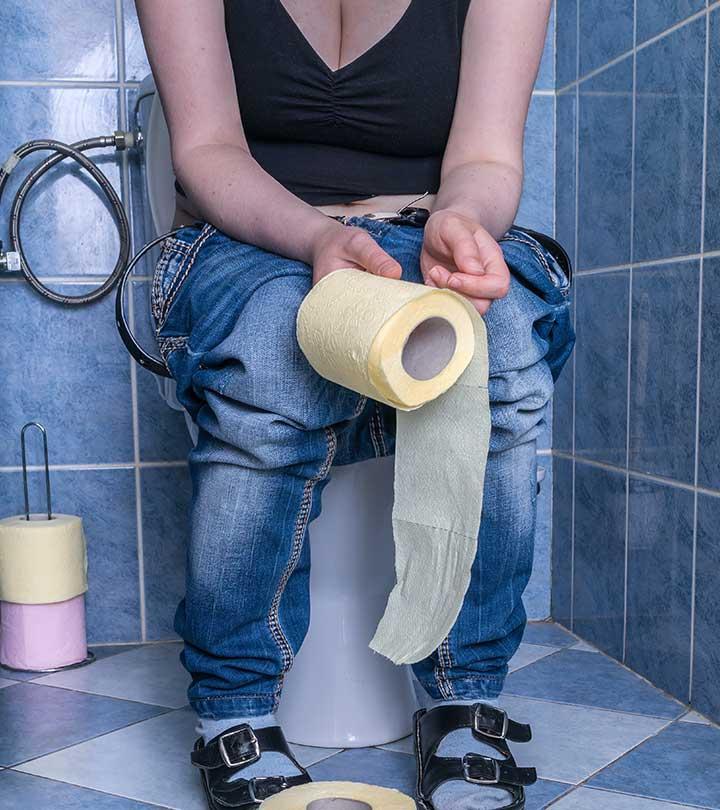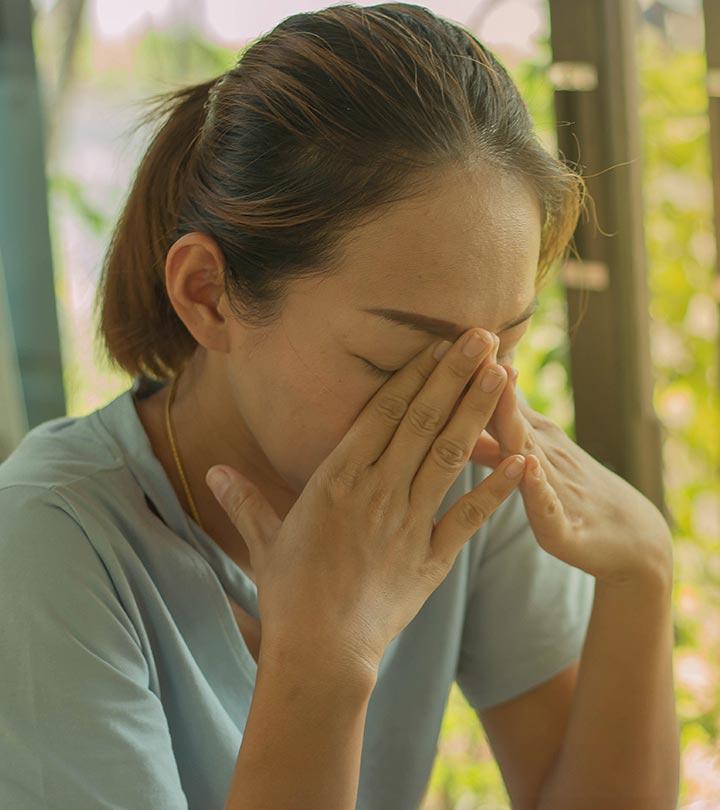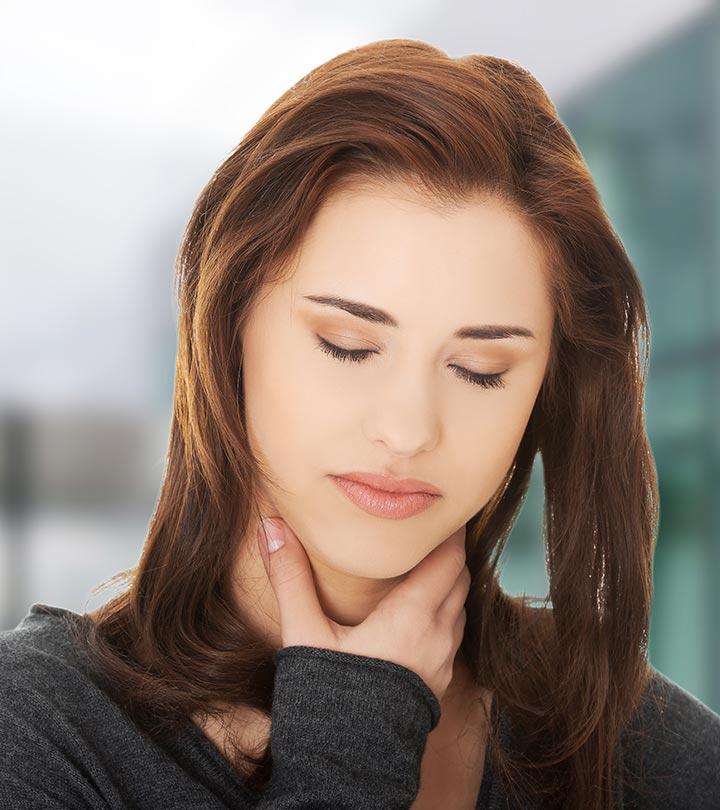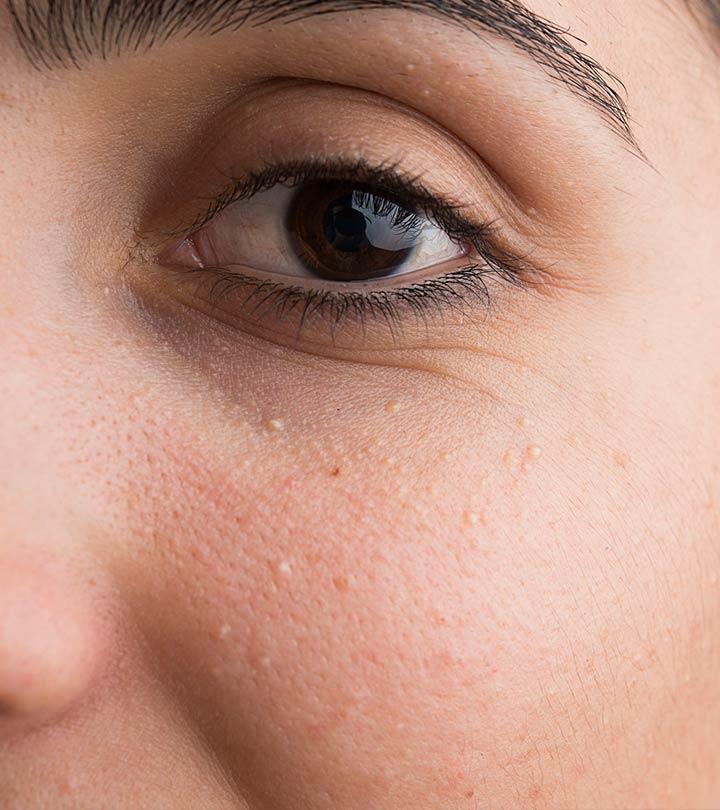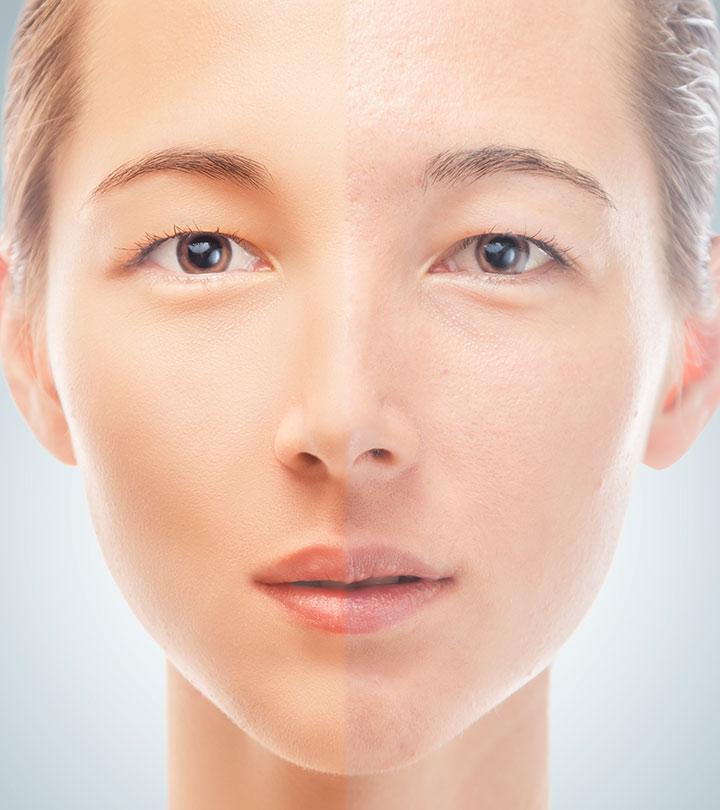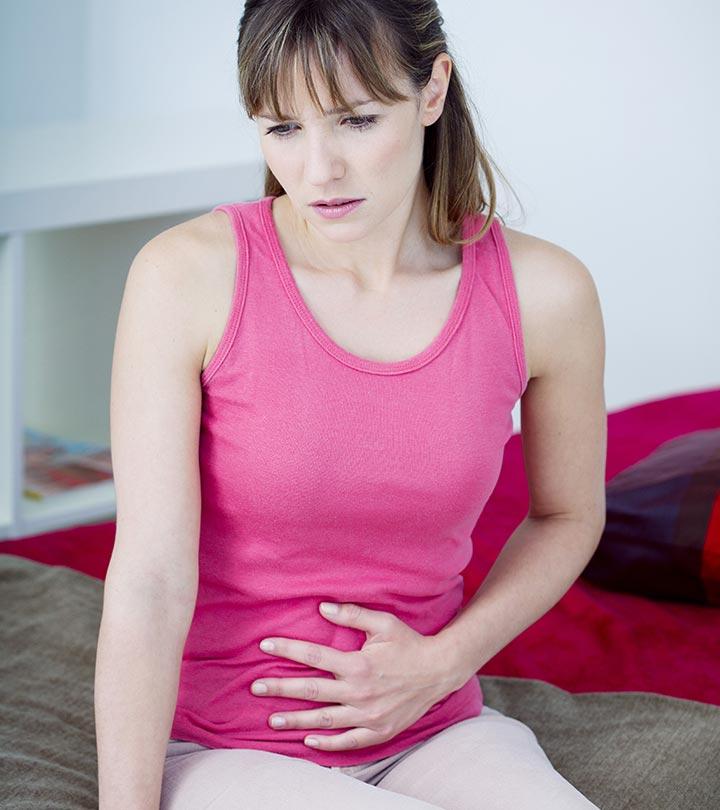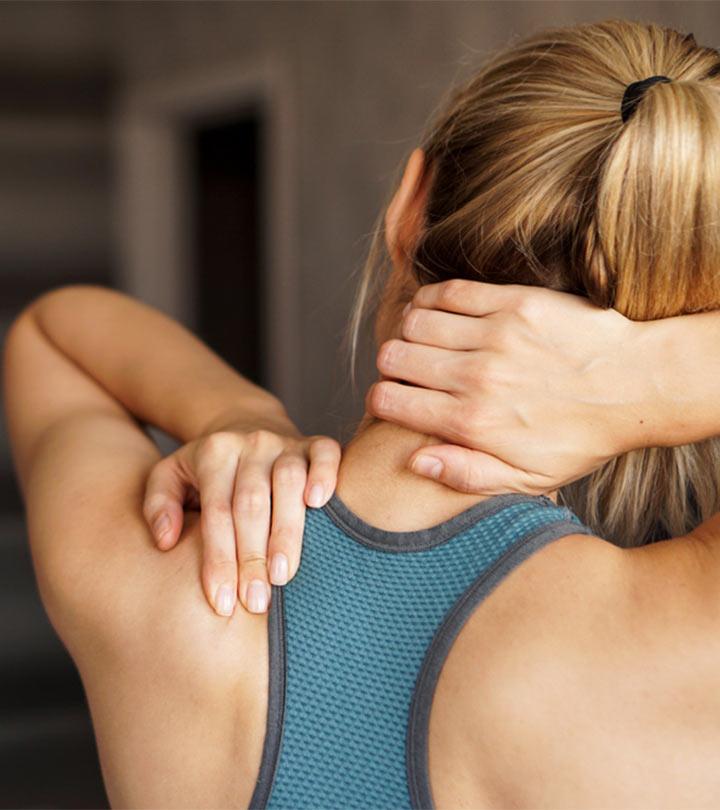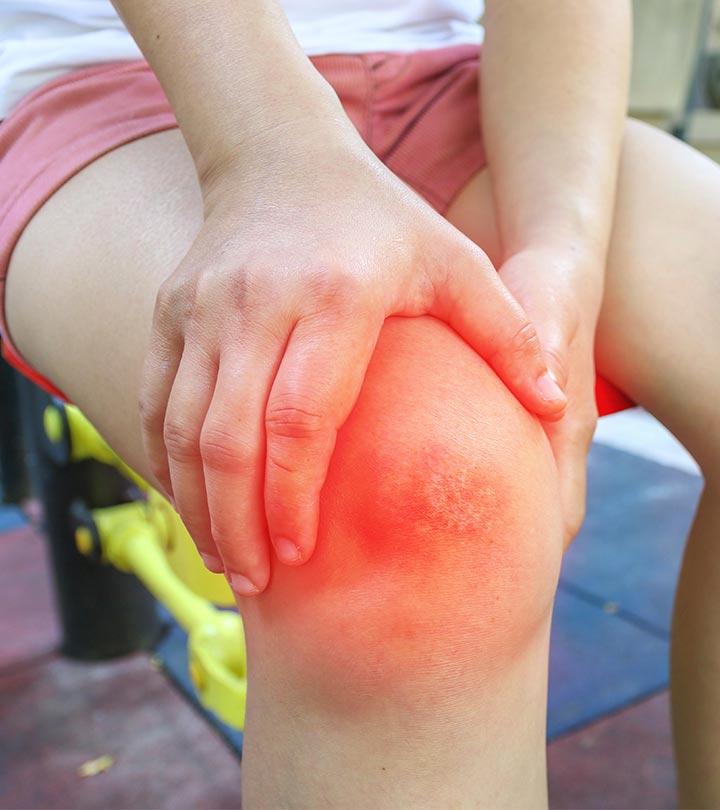15 Home Remedies To Relieve Back Pain Naturally
Easy solutions for your back pain that you can try out in the comfort of your home.

Image: Shutterstock
Lower back pain, also known as lumbago, is experienced by people of all ages and genders. Your back plays a major role in supporting body weight and is used for daily movements such as walking, standing, and sitting. Even though drug therapy is the most common treatment choice, people also resort to alternative treatments like chiropractic care and acupuncture. You can also use some simple home remedies to get rid of backache naturally unless your back pain occurs from serious damage to the muscle or ligament and requires medical attention. Keep scrolling to check them out!
In This Article
How To Relieve Back Pain Naturally
1. Essential Oils
Lavender essential oil exhibits strong antispasmodici XA drug that treats, prevents, or reduces muscle spasms, particularly those that affect the smooth muscles, like those of the gut wall. , anti-inflammatory, and analgesic properties (1). These properties may help in relieving pain and muscle spasmsi XOften known as muscle cramps, it happens when the muscle contracts quickly and impulsively and is unable to relax. .
You Will Need
3-4 drops of lavender oil
What You Have To Do
- Apply lavender oil to your back.
- Massage gently.
How Often You Should Do This
Do this at least 2 times daily.
b. Peppermint Oil
Peppermint possesses soothing and anti-inflammatory properties (2). This may help in relieving muscle spasms.
You Will Need
- 5-6 drops of peppermint oil
- 1 tablespoon of any carrier oil (coconut or almond oil)
What You Have To Do
- Mix a few drops of peppermint oil with a carrier oil of your choice.
- Apply this blend to the affected area.
How Often You Should Do This
Do this 2 times a day.
2. Other Oils
a. Castor Oil
Castor oil contains a compound called ricinoleic acid (3). This acid exhibits anti-inflammatory and analgesic properties (4). This may treat the inflammation that accompanies back pain and may also accelerate recovery.
You Will Need
1 tablespoon of castor oil
What You Have To Do
- Warm the castor oil and massage this on your back.
- Leave it on overnight.
How Often You Should Do This
Do this once a day.
b. Olive Oil
Olive oil exhibits anti-inflammatory and analgesic properties (5). This may help in treating back pain as well as its painful symptoms.
You Will Need
1 tablespoon of olive oil
What You Have To Do
- Warm some olive oil and massage it gently on your back.
- Leave it on overnight.
How Often You Should Do This
Do this at least once daily.
3. Epsom Salt Bath
Epsom salt has anti-inflammatory properties (6). Hence, it may help soothe inflammation and relieve pain.
You Will Need
- 1-2 cups of Epsom salt
- 1 bucket of water
What You Have To Do
- Add Epsom salt to a bucket of water.
- Soak and relax in this water for 10 to 15 minutes.
How Often You Should Do This
Do this 3 times a week.
4. Fenugreek
Fenugreek possesses natural anti-inflammatory properties (7). Thus, fenugreek may be used as a natural home remedy for black pain relief.
You Will Need
- 1 teaspoon of fenugreek powder
- 1 glass of hot milk
- Honey (optional)
What You Have To Do
- Add a teaspoon of fenugreek powder to a glass of hot milk.
- Consume this mixture.
- You can also add honey for flavor.
How Often You Should Do This
Do this once every night.
5. Turmeric
Turmeric contains a compound called curcumin that has anti-inflammatory and pain-relieving properties (8), (9). These properties of turmeric may be used to treat and relieve back pain and its symptoms.
You Will Need
- 1 teaspoon of turmeric
- 1 glass of hot milk
What You Have To Do
- Mix a teaspoon of turmeric in a glass of hot milk.
- Consume this mixture.
How Often You Should Do This
Do this 2 times a day.
6. Heating Pad
Heat therapy is found to have analgesic effects on muscles (10). This may help in relieving muscle spasms and pain. A hot compress helps relieve pain and reduce inflammation of the muscles.
You Will Need
Heating pad
What You Have To Do
Apply a heating pad on your back and leave it on for 25-30 minutes.
How Often You Should Do This
Do this once a day.
7. Ice Packs
Do you want to know how to relieve back pain fast at home? A cold compress and ice massage is the simplest way to do so. Ice packs have anti-inflammatory and analgesic effects on muscles (11), (12). Hence, they may help in relieving back pain. A cold compress and ice massage is the simplest way to get relief from back pain.
You Will Need
Ice pack
What You Have To Do
Apply an ice pack on your lower back and leave it on for 15 to 20 minutes.
How Often You Should Do This
Do this 1-2 times a day.
8. Vitamins
Vitamin B12 possesses anti-inflammatory and analgesic properties (13). This may be effective in relieving back pain and its symptoms.
Vitamins C, D, and E also exhibit anti-inflammatory and antioxidant properties (14), (15), (16). This may also help in reducing back pain.
Note: Consult a doctor before taking supplements for any of these vitamins.
 Quick Tip
Quick Tip9. Ginger
Gingerol is one of the active components of ginger. Gingerol exhibits strong anti-inflammatory and pain-relieving effects (17). This may help in reducing back pain.
You Will Need
- 1-2 inches of ginger
- 1 cup of hot water
- Honey (optional)
What You Have To Do
- Steep the ginger in a cup of hot water for 5 to 10 minutes.
- Add honey for taste and consume before it turns cold.
- Alternatively, you can use ginger oil to massage your back.
How Often You Should Do This
Do this 2 times a day.
10. Basil Leaves
Basil leaves contain some important oils, like eugenol, citronellol, and linalool. These oils exhibit anti-inflammatory and pain-relieving properties (18), (19). This may help in relieving back pain.
You Will Need
- 1-2 teaspoons of basil leaves
- 1 cup of hot water
- Honey (optional)
What You Have To Do
- Steep the basil leaves in hot water for 10 minutes.
- Add honey for flavor and consume this tea before it turns cold.
- Alternatively, you can apply basil oil.
How Often You Should Do This
Do this 2-3 times a day.
 Quick Tip
Quick Tip11. Garlic
Garlic is a rich source of selenium and capsaicin (20). The presence of these compounds imparts anti-inflammatory and analgesic effects to garlic (21).
You Will Need
- 8-10 garlic cloves
- A clean towel
What You Have To Do
- Crush the garlic cloves to form a fine paste.
- Apply this paste to the affected area and cover it with a clean towel.
- Leave it on for 25-30 minutes and then wipe it off with a wet piece of cloth.
- Alternatively, you can also chew on 2 to 3 cloves of garlic every morning.
How Often You Should Do This
Do this 2 times a day.
12. Warm Shower
The heat from warm water possesses analgesic properties. This property helps in relieving pain and inflammation (22). Hence, a warm shower may help in easing back pain.
13. Chamomile Tea
Chamomile possesses anti-inflammatory and pain-relieving properties (23), (24). These properties may help in relieving pain, swelling, and inflammation.
You Will Need
- 1 teaspoon of dried chamomile
- 1 cup of hot water
- Honey (optional)
What You Have To Do
- Steep the dried chamomile in a cup of hot water for 5-10 minutes.
- Add honey for flavor and consume this tea before it turns cold.
How Often You Should Do This
Do this 2 times a day.
14. Pineapples
Pineapples are a rich source of an enzyme called bromelain. Bromelain exhibits anti-inflammatory and analgesic properties (25). This may be helpful in treating back pain.
You Will Need
- 1/2 cup of pineapples
- 1 cup of water
What You Have To Do
- Blend the pineapples with water.
- Consume this daily.
- Alternatively, you can also eat half a cup of pineapples.
How Often You Should Do This
Do this once a day.
15. Aloe Vera Juice
Aloe vera possesses strong anti-inflammatory and analgesic properties (26). This may help in treating back pain.
You Will Need
1/4-1/2 cup of aloe vera juice
What You Have To Do
- Drink aloe vera juice daily.
- Alternatively, you can also apply aloe vera gel on your back.
How Often You Should Do This
Do this once a day.
Try any or a combination of these remedies to relieve back pain. Listed below are the causes of back pain.
Causes Of Back Pain
Any damage or injury to the muscles, ligament, or discs of your back may lead to back pain. The most common causes of strained ligaments, muscles, or spasms include:
- Improper lifting of an object
- Lifting heavy objects
- Poor or awkward posture
Alisa Burke, a blogger, recalls her personal experience of dealing with severe back pain and comprehending the issue behind it. On contemplation of the frequency of the pain, she realized that poor posture trapped her in this issue at a general age of 33. She has posted a few pictures of her running usual errands of her day and adds, “I have compiled a handful of studio shots taken of me in action and I cannot believe this is how I have been spending hours and hours working- no wonder I’ve got issues (i)!!!”
- Unsuitable mattress
- Sleeping disorders
- Medical conditions like a fever or infection affecting the spine
- Arthritis
- Age (older people are affected more by back pain)
- Gender (females are more prone to back pain than males)
- Pregnancy
- Smoking
- Strenuous physical workout or exercise
A report by the Centers for Disease Control and Prevention (CDC) states that 26% of working US adults experience low back pain. It was further observed that 20% of them were told by their health professional that their lower back pain was due to their work. 6% to 10% of workers changed their jobs or stopped working due to their lower back pain.
There are different types of back pain linked to each of these causes. Learn about them in the next section.
Different Types Of Back Pain
- Acute Back Pain
It lasts for a short duration (up to 6 weeks) and is caused by muscle strains or minor injuries. It can be intense but usually improves with rest and self-care (27).
- Chronic Back Pain
It usually lasts for more than 6 weeks and is linked to underlying conditions such as herniated discs, spinal stenosis, or degenerative disc disease (28).
- Radicular Pain
It is caused by compression, inflammation, or injury to the spinal nerves. It often radiates down the leg and is commonly associated with conditions like sciatica (29).
- Mechanical Back Pain
Movement issues in the spine, such as facet joint syndrome or sacroiliac joint dysfunction can lead to this type of pain (30).
In some cases, the cause may remain unknown. Individuals affected by back pain may exhibit certain symptoms. Let’s take a look at them.
Symptoms Of Back Pain
The common signs and symptoms of back pain are:
- Increased body temperature
- Swelling on the back
- Unceasing backaches
- Numbness around the back and buttocks
- In some cases, the pain extends to the legs and knees
- Pain worsens after long periods of sitting
These symptoms may usually be mild to moderate. If the symptoms are critical, seek medical help right away.
In addition to the remedies mentioned above, one may also follow some preventive tips to increase the efficacy of the treatment.
Preventive Tips
- Avoid foods, such as sugar, refined grains, dairy products, and red meat, that can cause inflammation and worsen your back pain.
- Increase your intake of fresh fruits and vegetables, fishes, nuts, and yogurt. These foods are not only anti-inflammatory but also rich sources of calcium.
- The first-line treatment for back pain mostly involves physical therapy. Practice yoga poses and exercises, such as Child’s Pose, Pigeon Pose, and Triangle Pose, that require stretching your back and legs.
- Make sure you provide support to your back when you sit or lie down for long periods. Posture correction plays a significant role in preventing and reducing back aches.
- Indulge in a gentle and soothing massage as a therapy to treat your back pain.
- Drink plenty of water to keep the discs of your backbone hydrated and healthy.
- Modifying your sitting and sleeping postures may also help treat back pain.
- Relaxation techniques and stress management can prove beneficial in suppressing ‘non-specific’ back pain that lasts for a longer time (27).
Best Sleeping Position To Avoid Back Pain
- Individuals who sleep on their back may keep a pillow under their knees to offer support to their spine.
- Stomach sleepers may place a pillow under their abdomen and pelvis to ease the strain on their back.
- Side sleepers may draw their legs to their chest and keep a pillow between their knees.
Best Sitting Position To Avoid Back Pain
Those dealing with back pain may provide support to their back while sitting for long periods. Resting the entire back on the cushion of the chair is recommended. Avoid sitting at the edge of the chair as it strains the back.
Infographic: 10 Yoga Poses For Back Pain
There are several natural herbal remedies that you can use to help you with backache. In addition to trying them, you can also practice yoga daily to alleviate back pain more effectively by strengthening your body and enhancing your physical awareness. Yoga can also help you deal with the stress that accompanies chronic pain as it is a holistic mind-body therapeutic approach (32), (33).
Check this infographic to know the most appropriate yoga poses for back pain relief. Illustration: StyleCraze Design Team
An injury to the muscles, discs, or ligaments of the back may lead to back pain. Lifting heavy weights with improper technique, bad sleeping positions, poor posture, arthritis, and pregnancy are a few of the most common causes of backache. Using an extra pillow for support during sleep may help alleviate or prevent backache related to sleep positions. There are also some home remedies that you may apply to get rid of back pain. Oil massage, aromatherapyi XIt refers to the application of fragrant plant extracts and essential oils for therapeutic and cosmetic uses. with essential oils like lavender or peppermint, incorporating pineapples in the diet, and an epsom salt bath are a few of the most effective ways to deal with an aching back. Make sure you follow a proper diet and nutrition plan so your body is healthy.
Frequently Asked Questions
What type of mattress is best for relieving back pain?
Individuals who sleep on their back need a medium-firm mattress. Meanwhile, those who sleep on their side need a slightly softer mattress to cushion their hips and shoulders. And for those who sleep on their stomach, a firmer mattress is required to keep them afloat.
When does back pain start during pregnancy?
Back pain may surface anytime during pregnancy. However, it is more common in the later stages of pregnancy as the baby starts to grow
What causes back pain in women?
Factors such as menopause, pregnancy, and hormonal issues may cause back pain in women (34), (35).
Can lack of water cause back pain?
Dehydration may cause back pain due to the reduced elasticity of discs. Studies suggest that backache is an associated symptom of dehydration (36).
How do I know if my back pain is kidney related?
If it is kidney related, the pain will be more in the upper back than the lower. It won’t get worse with movement or it won’t go away without treatment.
What organs can cause lower back pain?
Organs within the abdominal cavity can cause lower back pain (37). Some of the abdominal organs are the kidney, gallbladder, pancreas, and liver.
When should I be worried about lower back pain?
You should be concerned if the pain lasts four weeks or longer and keeps getting worse. Other symptoms like fever, weight loss or weight gain, weakness in extremities, and bladder problems may also mean your lower back pain can be caused by some other serious medical condition. So, it is best to consult your doctor and get it diagnosed.
Key Takeaways
- Back pain occurs due to any injury to the back muscles, discs, and ligaments. Examples of causes can be arthritis, lifting heavy objects, poor posture, etc.
- Some efficient home remedies to treat the pain are heat therapy, ice packs, warm showers, aloe vera juice, Epsom salt baths, etc.
- Change your sleeping and sitting positions to alleviate back pain.
- Get a gentle and relaxing massage or indulge in yoga and exercises to prevent back pain.
Suffering from lower back pain? Learn how to get fast relief with exercises and tips from this video. Get the knowledge you need to feel better now.
Personal Experience: Source
StyleCraze's articles are interwoven with authentic personal narratives that provide depth and resonance to our content. Below are the sources of the personal accounts referenced in this article.
i No Wonder I’ve Got Issues!!!https://alisaburke.blogspot.com/2008/11/no-wonder-ive-got-issues.html
References
Articles on StyleCraze are backed by verified information from peer-reviewed and academic research papers, reputed organizations, research institutions, and medical associations to ensure accuracy and relevance. Read our editorial policy to learn more.
- SILVA, GABRIELA L., et al. “Antioxidant, analgesic and anti-inflammatory effects of lavender essential oil.” Anais da Academia Brasileira de Ciências 87.2 (2015): 1397-1408.
https://pubmed.ncbi.nlm.nih.gov/26247152/ - Göbel, H., G. Schmidt, and D. Soyka. “Effect of peppermint and eucalyptus oil preparations on neurophysiological and experimental algesimetric headache parameters.” Cephalalgia 14.3 (1994): 228-234.
https://pubmed.ncbi.nlm.nih.gov/7954745/ - Akpan, U. G., A. Jimoh, and A. D. Mohammed. “Extraction, characterization and modification of castor seed oil.” Leonardo Journal of Sciences 8.1 (2006): 43-52.
http://ljs.utcluj.ro/A08/43_52.pdf - Vieira, Celme, et al. “Effect of ricinoleic acid in acute and subchronic experimental models of inflammation.” Mediators of inflammation 9.5 (2000): 223-228.
https://www.ncbi.nlm.nih.gov/pmc/articles/PMC1781768/ - Fezai, Myriam, et al. “Analgesic, anti-inflammatory and anticancer activities of extra virgin olive oil.” Journal of lipids 2013 (2013).
https://www.ncbi.nlm.nih.gov/pmc/articles/PMC3884608/ - Rudolf, R D. “The use of Epsom salts, historically considered.” Canadian Medical Association journal vol. 7,12 (1917): 1069-71.
https://www.ncbi.nlm.nih.gov/pmc/articles/PMC1584988/pdf/canmedaj00347-0031.pdf - Pundarikakshudu, Kilambi, et al. “Anti-inflammatory activity of fenugreek (Trigonella foenum-graecum Linn) seed petroleum ether extract.” Indian journal of pharmacology 48.4 (2016): 441.
https://www.ncbi.nlm.nih.gov/pmc/articles/PMC4980935/ - Aggarwal, Bharat B., and Kuzhuvelil B. Harikumar. “Potential therapeutic effects of curcumin, the anti-inflammatory agent, against neurodegenerative, cardiovascular, pulmonary, metabolic, autoimmune and neoplastic diseases.” The international journal of biochemistry & cell biology 41.1 (2009): 40-59.
https://www.ncbi.nlm.nih.gov/pmc/articles/PMC2637808/ - Kapoor, Shailendra. “Curcumin and its emerging role in pain modulation and pain management.” The Korean journal of pain 25.3 (2012): 202-203.
https://www.ncbi.nlm.nih.gov/pmc/articles/PMC3389329/ - Garra, Gregory, et al. “Heat or cold packs for neck and back strain: a randomized controlled trial of efficacy.” Academic Emergency Medicine 17.5 (2010): 484-489.
https://pubmed.ncbi.nlm.nih.gov/20536800/ - Petering, Ryan C., and Charles Webb. “Treatment options for low back pain in athletes.” Sports Health 3.6 (2011): 550-555.
https://www.ncbi.nlm.nih.gov/pmc/articles/PMC3445234/ - Dehghan, MOrteza, and Farinaz FarahbOD. “The efficacy of thermotherapy and cryotherapy on pain relief in patients with acute low back pain, a clinical trial study.” Journal of clinical and diagnostic research: JCDR 8.9 (2014): LC01.
https://www.ncbi.nlm.nih.gov/pmc/articles/PMC4225921/ - Mauro, G. Letizia, et al. “Vitamin B~ 1~ 2 in low back pain: a randomised, double-blind, placebo-controlled study.” European review for medical and pharmacological sciences 4 (2000): 53-58.
https://pubmed.ncbi.nlm.nih.gov/11558625/ - Dionne, Clermont E., et al. “Serum vitamin C and spinal pain: a nationwide study.” Pain 157.11 (2016): 2527-2535.
https://pubmed.ncbi.nlm.nih.gov/27434504/ - Lodh, Moushumi, et al. “Assessment of vitamin D status in patients of chronic low back pain of unknown etiology.” Indian Journal of Clinical Biochemistry 30.2 (2015): 174-179.
https://www.ncbi.nlm.nih.gov/pmc/articles/PMC4393394/ - Kim, Hee Kee, et al. “Analgesic effect of vitamin E is mediated by reducing central sensitization in neuropathic pain.” Pain 122.1-2 (2006): 53-62.
https://pubmed.ncbi.nlm.nih.gov/16524661/ - Black, Christopher D., et al. “Ginger (Zingiber officinale) reduces muscle pain caused by eccentric exercise.” The Journal of Pain 11.9 (2010): 894-903.
https://pubmed.ncbi.nlm.nih.gov/20418184/ - Singh, Surender, D. K. Majumdar, and H. M. S. Rehan. “Evaluation of anti-inflammatory potential of fixed oil of Ocimum sanctum (Holybasil) and its possible mechanism of action.” Journal of Ethnopharmacology 54.1 (1996): 19-26.
https://pubmed.ncbi.nlm.nih.gov/8941864/ - Szymanowska, Urszula, et al. “Anti-inflammatory and antioxidative activity of anthocyanins from purple basil leaves induced by selected abiotic elicitors.” Food chemistry 172 (2015): 71-77.
https://pubmed.ncbi.nlm.nih.gov/25442525/ - Bayan, Leyla, Peir Hossain Koulivand, and Ali Gorji. “Garlic: a review of potential therapeutic effects.” Avicenna journal of phytomedicine 4.1 (2014): 1.
https://www.ncbi.nlm.nih.gov/pmc/articles/PMC4103721/ - Arreola, Rodrigo, et al. “Immunomodulation and anti-inflammatory effects of garlic compounds.” Journal of immunology research 2015 (2015).
https://www.ncbi.nlm.nih.gov/pmc/articles/PMC4417560/ - Mooventhan, A., and L. Nivethitha. “Scientific evidence-based effects of hydrotherapy on various systems of the body.” North American journal of medical sciences 6.5 (2014): 199.
https://www.ncbi.nlm.nih.gov/pmc/articles/PMC4049052/ - Mahdizadeh, Shahla, Maryam Khaleghi Ghadiri, and Ali Gorji. “Avicenna’s Canon of Medicine: a review of analgesics and anti-inflammatory substances.” Avicenna journal of phytomedicine 5.3 (2015): 182.
https://www.ncbi.nlm.nih.gov/pmc/articles/PMC4469963/ - Srivastava, Janmejai K., Eswar Shankar, and Sanjay Gupta. “Chamomile: a herbal medicine of the past with a bright future.” Molecular medicine reports 3.6 (2010): 895-901.
https://www.ncbi.nlm.nih.gov/pmc/articles/PMC2995283/ - Pavan, Rajendra, Sapna Jain, and Ajay Kumar. “Properties and therapeutic application of bromelain: a review.” Biotechnology research international 2012 (2012).
https://www.ncbi.nlm.nih.gov/pmc/articles/PMC3529416/ - Farzadinia, Parviz, et al. “Anti-inflammatory and wound healing activities of Aloe vera, honey and milk ointment on second-degree burns in rats.” The international journal of lower extremity wounds 15.3 (2016): 241-247.
https://www.ncbi.nlm.nih.gov/books/NBK284952/ - Acute low back pain: diagnosis and management
https://www.ncbi.nlm.nih.gov/pmc/articles/PMC8801838/ - Back Pain
https://www.ncbi.nlm.nih.gov/books/NBK538173/ - Radicular Back Pain
https://www.ncbi.nlm.nih.gov/books/NBK546593/ - What is mechanical back pain and how best to treat it?
https://pubmed.ncbi.nlm.nih.gov/18973732/ - Low back pain: Relaxation techniques for back pain
https://pubmed.ncbi.nlm.nih.gov/27217089/ - Noninvasive Treatments for Acute, Subacute, and Chronic Low Back Pain: A Clinical Practice Guideline From the American College of Physicians
https://www.acpjournals.org/doi/10.7326/M16-2367 - Yoga, Physical Therapy, or Education for Chronic Low Back Pain
https://www.acpjournals.org/doi/10.7326/P17-9039 - “Increased Low Back Pain Prevalence in Females than in Males after Menopause Age: Evidences Based on Synthetic Literature Review.” Quantitative Imaging in Medicine and Surgery, Pubmed.
https://pubmed.ncbi.nlm.nih.gov/27190772/ - “Low Back Pain Intensity among Childbearing Women and Associated Predictors. A Cohort Study.” Women and Birth, Pubmed.
https://pubmed.ncbi.nlm.nih.gov/30274876/ - “Dehydration related abdominal pain (DRAP).” Pubmed (2004): 14(1):14-7.
https://pubmed.ncbi.nlm.nih.gov/14764254/ - “Mechanisms of Low Back Pain: A Guide for Diagnosis and Therapy.” Pubmed.
https://www.ncbi.nlm.nih.gov/pmc/articles/PMC4926733/





